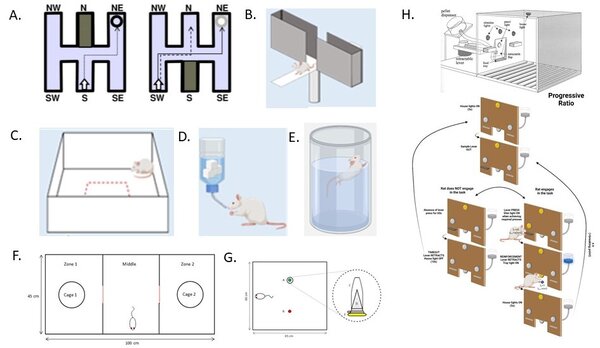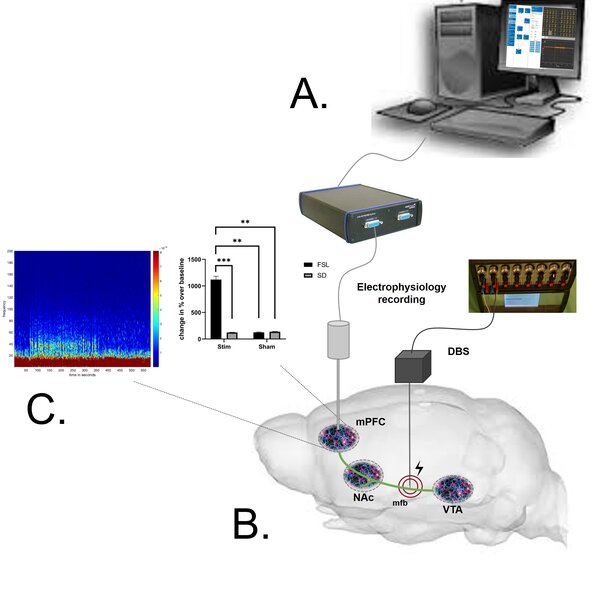Biological and Behavioral Investigations

Behavioral tests, operant box (Created with BioRender)
We explore the biological substrates, including the physiological and cellular sequelae, and the behavioral consequences of neuromodulation in rodent models of Depression. We are interested in what happens after acute and chronic mfb stimulation to behaviors associated with “depression-like” phenotype, such as exploration, anxiety levels, motivation levels, reward orientated or social interaction type of behaviors. We use a wide variety of behavioral tests, and recently we have implemented the use of operant chambers to permit a deeper analysis of the behaviors of the depression models, and the consequences of stimulation. The physiological consequences of stimulation, such as what happens to neuronal activity, brain oscillations and neurotransmitter release in different areas associated with depression (such as the ventral tegmental area, the nucleus accumbens or pre-frontal cortex), we monitor using electrophysiological methods, and fiber photometry. Exciting developments include integrating the physiological read-outs with real-time, chronic studies using awake and freely moving behavior measurements. Analyses are routinely completed by histology targeting components of various neurotransmitter systems and molecular biology methods looking at changes in gene expression, for example. In collaboration with Freiburg colleagues, we have also started using non-invasive imaging such as micro-PET to permit the longitudinal monitoring of changes in regional activity or in components of dopaminergic transmission.

Fiber photometry set-up (right)
A. Hardware of fiber photometry
B. DBS and impanted fiber optics
C. Histological verification of biosensors

Electrophysiological set-up (left)
A. Hardware of electrophysiology recording
B. DBS and implanted recording electrode
C. time frequency analysis of brain oscillation
